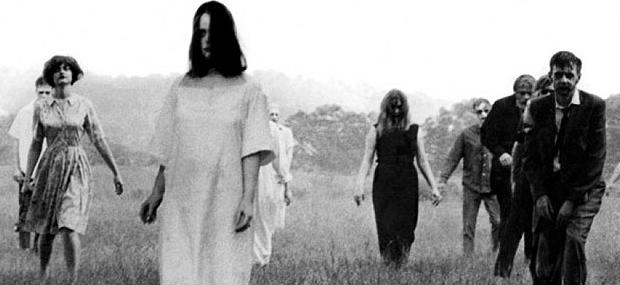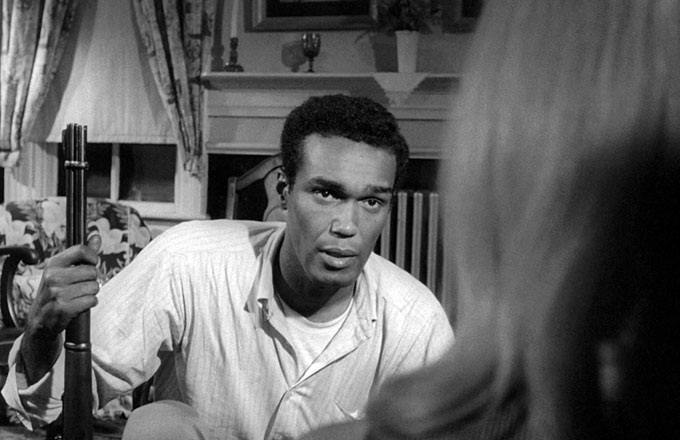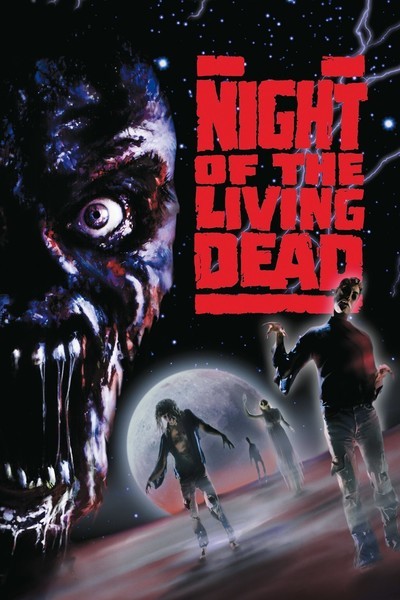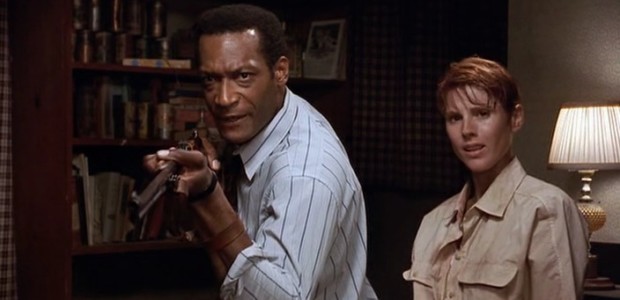
Even you’ve never seen NIGHT OF THE LIVING DEAD, there’s very likely a chance you’ve seen many movies that carry its influence. Not only that, so many other horror movies feature the movie itself within it, playing on TV sets or movie screens as background noise. It’s either that many final girls are huge fans of the film, or the mere fact that the film is in the public domain, due to lack of any copyright claim. While there will probably be no definitive home video release of the film, the beauty of public domain is that everyone has access to it easily. It’s a necessary watch, not just for horror fans, but for film lovers in general. Directed by the late and very much lamented George A. Romero, his debut is a landmark in genre filmmaking, proving the long lasting influence of indie filmmaking and the effectiveness of keeping things simple.

NIGHT OF THE LIVING DEAD doesn’t try to make anything complicated, and there’s no reason to. We follow Barbara (Judith O’Dea), as she and her brother Johnny (Russell Streiner) visit their father’s grave. He begins to tease her, only to be attacked by a strange man who knocks him down. She manages to escape and finds her way to a farmhouse, where she meets Ben (Duane Jones), a young African-American man who also was attacked and sought refuge there. It turns out there are other survivors hiding in the cellar, and their attempts to get out to find safety elsewhere eventually get most of them killed. Ben ends up being the sole survivor until he is shot by vigilantes, who believe he is one of the “ghouls.” Throughout the movie, we listen to some radio clips, where it is presumed that radiation from a destroyed satellite could possibly be the root of the dead coming back to life. It’s never fully explained, but it brings a whole level of possibility and wonder to the film that helps lengthen its legacy.

Although the film is often a reference point when discussing zombie movies, the word “zombie” is never used anywhere throughout it. The ghouls crave flesh and walk at a glacier pace, but their silence makes their sudden appearances all the more frightening. Adding to the grim atmosphere is the fact that none of our protagonists survive. The ending proved to hit a little too close to home, as we have a (still) rare black hero who makes it until the end, only to be shot dead by some rednecks. His body is then thrown in a pile of corpses, where it is burned as if he was never human to begin with. The film’s timing was unsettling, as earlier in the year, Martin Luther King Jr. was assassinated, igniting what were deemed race riots. What makes this even more sad is the imagery used in the end is something we still see in the news today. Regardless of where one stands when it comes to the Black Lives Matter movement, the truth is that the discussion has never gone away. Romero’s film gave birth to a cinematic martyr who would never be acknowledged in his own cinematic universe.

Decades later, Romero decided to rewrite his own script, and provided us with a 1990 update, this time with special make-up effects creator Tom Savini in the director’s chair. The remake remains largely faithful to the original, with some significant updates. One of the most notable and positive changes was that Barbara (KNIGHTRIDERS‘ Patricia Tallman) is now someone who can stand on her own. Where in the original, she simply went mad and got herself killed, here she takes control of the situation and arms herself. The new Barbara is tough, and it’s not just because of the short haircut. Ben (now played by Tony Todd) still plays a big part, but his fate is treated differently. While Barbara gets out and survives, she comes back with help, only to find Ben has gotten infected and is now one of the walking dead. He still gets shot, but this undead twist diminishes any of the social commentary the original carried.

While the original will always remain a classic, the remake isn’t too bad. Savini throws in some of his special effects experience for some bloody kills, and creates some memorable zombie looks. Some jump scares are expertly utilized, but the remake feels more like standard fare. The Romero film reminds us how horror can be a great conversation piece and can be used as potent allegory when presented right.

Tags: Bill Moseley, Classics, Columns, Duane Jones, George A. Romero, Horror, Judith O'Dea, Patricia Tallman, remakes, Russell Streiner, tom savini, Tom Towles, Tony Todd


No Comments